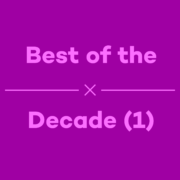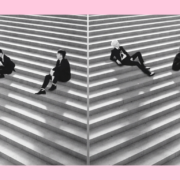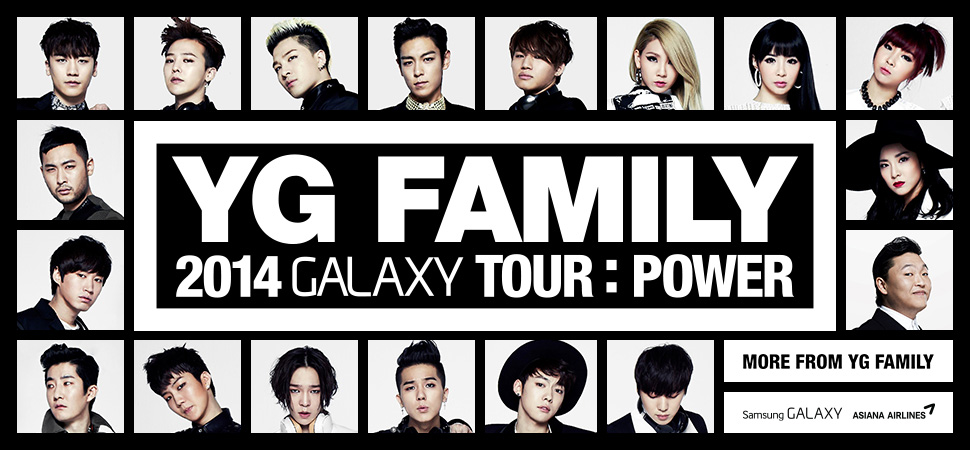Music Video Director Ian Gallagher on Working with Neon Bunny for Free, Co-Directing WINNER, and Dreamlike Images [INTERVIEW]
Music videos are a huge part of what entices international fans to K-pop thanks to their accessibility online. The work of music video director Ian Gallagher is not exactly the dancing in box or love stories that are so typical to the genre. His work with the queen of South Korea’s electro-indie scene, Neon Bunny is some of the best in the country and shows an entirely more abstract image than the average K-pop music videos (or MVs as they’re commonly known).
In celebration of Neon Bunny’s return with her new album, “Stay Gold,” and his latest work on her video for “Room 314,” we caught up with Gallagher for an interview about his creative process. The director sheds light on his inspirations, his ongoing collaboration with Neon Bunny, working with YG boy group WINNER, and his work in film.
I’d like to start by asking how you got into film and music video directing?
I had two main interests in high-school, writing fiction and playing music. Playing in bands naturally led me to create images for the band, mostly cover designs and stickers, which led to an interest in visual arts. It was hard for me to stick to one thing though. I loved all the different mediums and how they related to each other, the differences and similarities. I wrote a lot of short stories and attempted a novel, while continuing to play music and study a bit of graphic design in college. It took awhile, but I came to the slow realization that films utilized all these different elements to create something else. I think this was like 7 or 8 years ago. I began writing screenplays and bought a cheap DSLR and went from there.
Were there any films or videos you had seen that made you want to do work in cinema?
The greatest push was watching Andrei Tarkovsky’s “Stalker.” It was the most beautiful thing I had ever seen. The film has a simple elegance to it, in story and in cinematography, yet it delves into some deep questions about being human. After watching the film I knew that that was what I wanted to do. To make something like that.
How did you end up working in Korea? Any advice for other foreigners who might want to do the same?
I’m a rare case actually. I’m half-Korean, half-American, and pretty much grew up in Korea speaking both Korean and English. [I] went to a Korean elementary school, but then went to an international school for high-school. So the culture of Korea is not foreign to me. I’m not exactly an expat, yet I’m not Korean. I’ve always been sort of in the middle of two cultures. My advice to foreigners is come on over, learn the language, be nice and have a great time. It’s a great place to work; a lot of interesting things are happening in art. I think Korea is just now breaking into a post-modern era, and it’s really amazing witnessing the change.
What’s it like to make films there compared to anywhere else you might have worked?
Koreans have the most intense work ethic I’ve ever seen. I love working with a Korean crew.
What is your process for directing a music video?
I have to love the song. I need to really feel something from the music. It’s a pretty simple process though. Once I have a song, I just listen to it non-stop and try to figure out a visual mood for it. Looking back on my videos, I think I’m more focused on capturing a certain overall tone than individual images. Especially for music videos, I try to mimic the process of writing music and go with what feels right at the time instead of anything too intellectual.
Your collaboration with Neon Bunny started in 2011 with “Together With Me.” How did it come about?
I think her first album had just come out and she already had another video. I heard “Together with Me” and loved it. So I e-mailed Neon Bunny saying I’d make her a video for free with no budget, and sent her the idea. I don’t know what she thought about me, but for some reason she accepted and it turned out to be great fun. I was still learning all the technical aspects of filmmaking and it shows in the video, but it was a blast to do.
Also on KultScene: Seoul-Based Punk Band …Whatever That Means Talks Music & Multiculturalism [INTERVIEW]
What made you continue that collaboration with Neon Bunny?
She’s a truly great musician. Her songwriting abilities are just amazing. It’s no easy task to create pop music which also has depth, it’s one of the hardest things to do in music, but Neon Bunny seems to do it so effortlessly. So I’m pretty much honored to be allowed to create videos for these songs. A music video is only as good as the music. Also, Neon Bunny produces her own music on her own label, so it’s really great to be able to make decisions without having a committee to water down the ideas.
How has your relationship grown over the years?
We’re good friends now. I think we know each other’s strengths and weaknesses and that helps when we are trying to create something together.
What is your process for making a music video with her compared to with others?
Much more laid back. There’s definitely a trust that’s developed over the years. Shooting videos is usually a tedious and difficult process, a lot of stress, never enough money or time, but with Neon Bunny it feels like we’re actually having fun. For the video for “It’s You” we just travelled around various places in Seoul and shot whatever we felt like. There was an overall structure but instead of extensive storyboarding, planning, and having a big crew, we let it go loose and it was a lot of fun. It would be hard to propose shooting a video like that to another artist.
Your work with Neon Bunny, from the soft focus of “Together With Me” all the way up to the crystalline views in your latest work “Room314,” has almost always had an impressionistic quality to it. Is this a particular style you like and what draws you to it over a straightforward narrative?
I’ve never really been a fan of narrative music videos. Of course there are great videos that use narrative devices, but I like to be closer to the abstract nature of music. To me, it’s about feelings and moods, and a kaleidoscope of emotions. The nature of dreams also take up a large portion of my work. I love hazy ill-defined things, and it ends up in the videos. I’m not trying to create any kind of deliberate style though, I think it just happens because I try not to intellectualize the work and make decisions based more on instinct. Anything I do will inevitably have my stamp on it because it’s come through the filter of my brain, so I try not to think of any personal kind of style. The whole process is a discovery really, seeing what happens, how certain elements give unexpected results. This happens throughout the entire making of the video, from the first idea, to shooting, and especially in the editing.
Do you think it works especially well with music videos?
Yes. For films I take a completely different approach. Narrative films are about the story and characters, but with music videos it is a good opportunity for me to explore the more abstract and impressionistic aspects of filmmaking. The works of Stan Brakhage, Jonas Mekas, and Chris Marker have also been a great revelation and influence on my own stuff. In my mind it’s like the relationship between prose and poetry, and playing with the gray area between the two forms.
I also noticed a certain digital edge to a lot of your work. The affected colours of “Romance in Seoul” comes to mind, is that a conscious effort to replicate Neon Bunny’s electronic music?
I like to play with the imagery of more mainstream K-pop videos, and the idea came out of re-appropriating the super saturated color schemes of many of those music videos. Like a twisted version of a dance video, but still poppy and colorful to look at. The electronic aspect of the music definitely pushed the visuals in that direction. The basic idea behind “Romance in Seoul” was a fever dream recorded digitally and played back with glitches and errors. The dancers were amazing to shoot. All the dancing in the video was improvised on the spot.
Also on KultScene: Yoo Seung-Ho Shines in Comedic Caper “Seondal: The Man Who Sells the River”
What was it like working with WINNER? At the time they were a potentially huge debuting group and you have the task of creating a video from an instrumental song of theirs, not exactly standard idol fare. Is your approach to a song like that different to something more straightforward?
Actually, the song was written and performed by Min Woo Kang, a really great electronic musician, specifically for the teaser video. There’s a bit of a misconception that it is a WINNER song. The co-director, Kim Zi Yong, and I decided we wanted to try something different with the music. Usually for teasers a song from the band is used, or a song is licensed. I think because WINNER was still in production on their album, maybe in the mixing process, it wasn’t possible to use one of their songs, so we decided to hire a musician to basically score the teaser. It was the first time we worked like that and I am really proud of how that came out. The song was written as the editing of the video was taking place, so the editing changed with the song, and the song changed to the edit if we needed anything at a certain part.
Working with WINNER was great. They are a great group of guys, really nice and very passionate about their work. I was pleasantly surprised to see how professional they were even though it was one of their first videos. In fact everyone over at YG was great, with more of a collaborative atmosphere than the other companies.
“The Visitor” is also another example of your impressionistic work, what sort of story did you try to tell with it, if any?
The story aspect came from co-director Kim Zi Yong. The basic premise is the end of a night of partying, with each member being in a different situation. My involvement may have added a little bit of that impressionistic aspect to it, but when collaborating like that it becomes hard to tell what element came from who. Those are the best collaborations too.
How was it working with Kim Zi Yong?
It was probably the most fun I’ve had. It’s great being able to bounce around ideas like a tennis ball, adding a bit here, changing some there, always coming up with something else that you couldn’t have thought up alone. We were good friends before working on the video so it just became an extension of that. Playing around with ideas and seeing where that leads. The editing was also collaborative, with each of us taking a pass at it over and over again, riffing on what the other one did. He’s a really great director and I’m always excited to see what he’ll come up with next.
I watched the trailer for you new short film “망” (“MAHNG”) and am very intrigued. Can you tell me a little bit more about that? Where can we eventually see it?
“MAHNG” is a period piece, and though it’s not based on anything specific, I wanted to take aspects of Korean folk tales and try to spin a new story out of that structure. The basic storyline is of a young woman who has lost her husband, and she drags his body across the land to a shamanistic shrine, and prays for the spirits to bring her husband back to life. At night, a spirit comes to hear her speak, but things don’t work out the way she wanted. We’re still in the process of sending it out to film festivals, but after that run we plan to put it up online for free.
Do you have a preference for making films or music videos?
Though related, the two are vastly different in execution so it’s hard to say which I prefer. Each medium offers something different in creative satisfaction. I’d like to eventually make feature films, but it’ll be a long and slow process getting there, especially since the films I want to make won’t fit perfectly in the mainstream. Music videos offer a great outlet for me, but I plan on doing more diverse work. More short films, more videos that aren’t exactly music videos but something else. The goal is to keep plugging at it and always having fun.
What are you working on at the moment?
We just finished a video for Neon Bunny for the song “Room314.” We’re probably going to do another track off the album but it’s still in the preliminary stages. Working on screenplays during the down time.
Thanks so much for the interview. Is there anything you would like add or ask in return?
Thank you for the interview. I think it’s great that you guys are covering some Neon Bunny related news. More people need to hear the music. Buy the albums. Support the artists that you love so they can make way cooler shit.
What do you think of Ian’s work? Share your thoughts in the comment section below and be sure to subscribe to the site and follow us on Facebook, Twitter, Instagram, and Tumblr to keep up with all of our posts.











